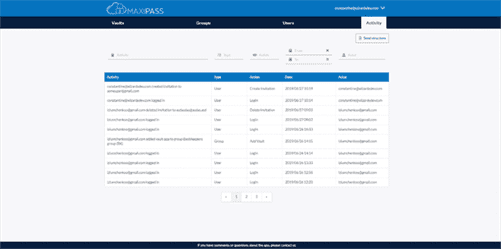Norman became the first official user experience architect during his time at Apple in the 1990s. The term user experience (UX) refers to all aspects of this interaction. UX design seeks to make products and services that are easy, effective, and delightful. Essentially, UX applies to anything that can be experienced—be it a website, a coffee machine, or a visit to the supermarket. The “user experience” part refers to the interaction between the user and a product or service.
Whether you plan to work as a freelancer or prefer to work in a company, UX design is a remote-work-friendly profession. More companies are hiring remote employees and contractors than ever before. As a remote professional, you will work primarily with digital tools and must have good communication and presentation skills.
The Difference Between UX and UI Design: A Beginner’s Guide
All content on the platform, with the exception of degrees, is available on demand. It’s also worth noting that their degree programs are only available for new applications during set windows. They also recently launched a Google UX Design Professional Certificate to help learners build job-ready skills in under six months. As we mentioned above, the real key for graphic designers is to understand user research in all its forms.
- Both UX and UI design are highly collaborative, varied career paths, placing you right at the cutting edge of technology and innovation.
- Even if the interface stayed the same, your experience with Google would be dramatically different.
- User-centered design is an iterative process where you take an understanding of the users and their context as a starting point for all design and development.
- From finding a product to checking out, are the successive steps intuitive for the user?
- For a computer to work, users needed to communicate via programming language, requiring seemingly infinite lines of code to complete a simple task.
- The definition of UX isn’t constrained to just tech products, although that’s where we see it used the most.
This is especially important for web design — sites should be viewable and usable on everything from a 27-inch monitor to a 5-inch smartphone screen. Many UI designers also develop and implement the interactive elements of a website or service. This process could include animations or other interactive elements. For example, a UI designer might create a website animation that triggers after a user clicks a button. Content strategy focuses on the planning, creation, and execution of content which can include text, images, and multimedia elements on a page or in an application. Content strategy isn’t always the responsibility of a UX designer, but more companies are emphasizing content-driven design to deliver a more effective experience.
What does UI & UX stand for and how they’re different?
You’ll hear from practicing UX designers from within the IxDF community — people who come from diverse backgrounds, have taught themselves design, learned on the job, and are enjoying successful careers. The biggest benefit for graphic designers moving to UX design is that they can make things attractive. A very common misconception about UX design is that good usability trumps aesthetics.

Look for a course or program where you’ll learn the fundamentals, get hands-on experience with the latest UX design tools, complete projects for your portfolio, and network with others in the industry. The goal of universal design is to ensure that everyone, regardless of their individual differences, can effectively interact with and benefit from the designed experience. So we now know, in abstract terms, what the role of the UX designer entails—but how does this translate into everyday tasks? Here is an example of a UX designer’s typical tasks and responsibilities. You’ll find a more detailed account of the UX design process in this guide.
What Is User Experience Design (UX)?
As you begin to build out the design, you’ll create site maps, wireframes, or prototypes to give you and your team a better idea of what the final product will look like. At this stage, a user interface (UI) designer will add visual or interface elements. UX designers seek to make everyday products, services, and technology as user-friendly and accessible as possible. They employ design thinking to reconcile the user’s desires with technical feasibility and business viability.

Norman’s book, The Design of Everyday Things, is still standard reading for UX studies. “User experience (UX) is the interaction and experience users have with a company’s products and services. Simply put, user interface (UI) is anything a user may interact with to use a digital product or service. This includes everything from screens and touchscreens, keyboards, sounds, and even lights. To understand the evolution of UI, however, it’s helpful to learn a bit more about its history and how it has evolved into best practices and a profession. Don Norman, a cognitive psychologist and designer, coined the term “user experience” in his 1988 book The Design of Everyday Things.
Learn More about UX Design
UX is the feeling we get when we get there when the bridge is well-built, or plummet to our death (talk about bad UX!). For example, it’s kind of like asking, “What is the difference between red paint and the chemicals the paint is made up of? Red paint is made up of all sorts of different chemicals that when combined together make red paint. There is no difference between UX and UI design because they are two things that aren’t comparable to each other. By 1984 Apple Computer released the Macintosh personal computer which included a point and click mouse.

Get an interactive introduction to UX design with the Google UX Design Professional Certificate on Coursera. Build job-ready skills and complete portfolio-ready projects in less than six months—no degree or prior experience required. According to Glassdoor, the average salary for UX designers in the US, including base pay and additional compensation such as commission and bonuses, is $94,260 [1].
The 20 Best Graphic Design Schools
UX designers spend a lot of time planning for future projects, analyzing existing designs, and tracking the performance of their designs. Another difference between UI and UX designers is the level of detail that goes into their work. UI designers work on individual pages, buttons, and interactions; making sure they are polished and functional.

There are several online and offline resources to learn UX design, many for free. However, that also means a lot of misinformation is present on the internet. One credible and free resource is the Interaction Design Foundation. You might see the “UX/UI designer” job title and think UX and UI are interchangeable. This content has been made available for informational purposes only.
Related service
Sentiment testing and heat mapping are also key testing strategies here. Both of these programs may allow you to complete your studies online relatively quickly and fit your schedule. A user interface encompasses everything a customer experiences when using a company’s digital products and services. The UI focuses more on brand deliverables like color scheme, typography and more of the website and other digital products. Similar metrics can help a business understand the user interface, but the focus here is primarily on the real elements of digital ownership.
Learn more with
UX designers start with the Why before determining the What and then, finally, How to create products with which users can form meaningful experiences. In software designs, you must ensure the product’s “substance” comes through an existing device and offers a seamless, fluid experience. As computer technology emerged and evolved, the ideas of UX translated into early computer designs. These early innovations included the graphical user interface (GUI) and the mouse — physical and virtual mechanisms still standard today. The actual term user experience is thought to have originated in the 1990s when cognitive psychologist Donald Norman joined Apple with the title user experience architect.
Specifically, UX designer responsibilities include strategy development, testing, implementation, and analysis of products/services and their overall designs. You might also want to try the folks at Coursera.org, which is a low-cost but high-quality devops team structure education provider which delivers courses on a wide range of subjects including UX. It does partner with universities and companies to offer courses, Professional Certificates, and degrees, and courses are generally very good.
